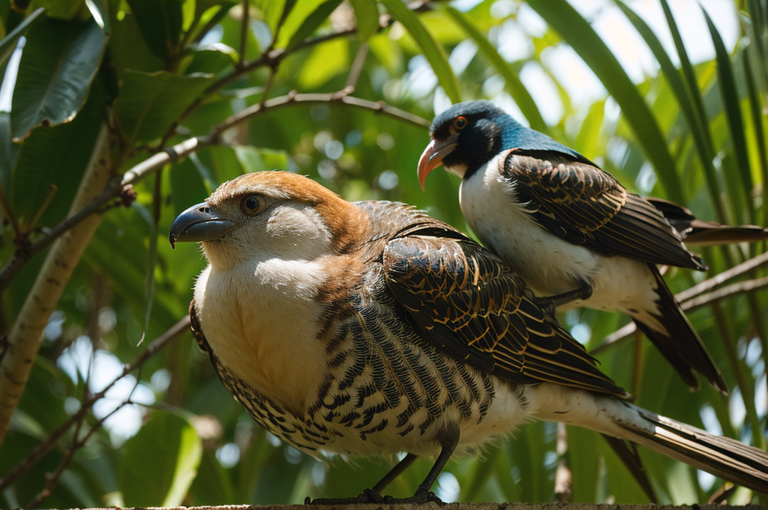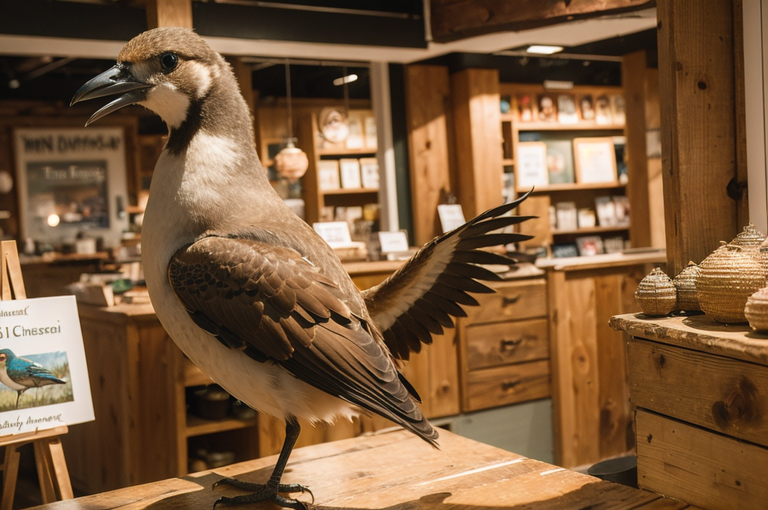Inside the Wild Bird Fund: Rehabilitating NYC's Feathery Friends and their Habitats

The Wild Bird Fund in NYC rehabilitates about 10,000 birds annually with a variety of species. The organization, supported by over 200 volunteers, also aids in rehabilitating habitats and non-avian species.
Introduction to the Wild Bird Fund
As dawn awakens, my mind gravitates towards an extraordinary organization nestled in the heart of New York City. This urban haven is none other than the Wild Bird Fund, a refuge dedicated to the care and rehabilitation of avian creatures. There’s a compelling rhythm to this sanctuary, an undercurrent of activity that’s a bit like the heartbeat of the city itself.
Overview of the organization
The Wild Bird Fund caters to an array of wild birds, creating a haven that hums alive with the squawks, caws, and coos of our feathered neighbors. Much like the varied inhabitants of our city, the bird species represented here are delightfully eclectic, each with their unique stories and personalities.
Range of bird species catered to
Snowy egrets, starlings, peregrine falcons, pigeons, even Pakistan’s national bird all find solace and care within the walls of this center. The diversity within these corridors mirrors the sprawling metropolis just beyond the doors of one of these wild bird centers, becoming an urban reflection of the vast spread of avian species.
Rehabilitation efforts involved
The organization houses an impressive arsenal of facilities like an intake room, quarantine chamber, X ray machine, and operating room. Each space is designed to aid in the rehabilitation process, from initial assessment to final release back into the wild. The team’s tireless dedication and meticulous care resonate in each chirp and flap of wings, echoing the beauty and resiliency of the avian world.
Seeing these birds take flight once again, their strength restored, is a marvelous spectacle that never grows old. And while each story tugs at my heartstrings, the harmony between humanity and nature brought forth at the Wild Bird Fund is a reminder that we share this world with exquisite creatures whose lives forever intertwine with our own.
Volunteer Efforts
The wild bird fund, a cause close to my heart, thrives on the tireless dedication of over 200 volunteers. These individuals aren’t just committed workers they’re passionate bird enthusiasts who share my fascination with the avian world. It’s incredibly fulfilling to be a part of this larger team. We ain’t flashy superheroes, but we have our share of rescuing stories.
Adoption and Care of Birds by Volunteers
Volunteering isn’t just about committing time and effort, it’s about opening your heart and giving tenderness a permanent nest. The scene I frequently draw upon is the patient volunteer, nurturing a feathered friend back to health under the keen eye of expert care. Kindness indeed wears many hats, some with feathers.
Role of Volunteers in Rehabilitation
In the dynamic avian world, to rehabilitate roughly 10,000 wild birds annually is no small feat. Volunteers play an active role not only in first aid but in the challenging path of recovery too. Caring for these creatures, forming bonds, and then letting them go, it reciprocates far more than just satisfaction.
Efforts Outside Regular Duties
Deeper into this realm, there’s a lot of unsung heroes who volunteer beyond their call of duty. These kind hearted folks refurbish the damaged habitats of these birds, providing a safe haven, a fresh start. So much for a regular day at the wild bird fund.
In this world that’s alive with flaps and feathers, you’ll find many of us bird enthusiasts, nature lovers and volunteers all drawn together to protect the fascinating bird species we share our planet with. At the core, we’re a tight knit flock, and we wouldn’t have it any other way.

Challenges Faced
With a deep breath, I must confide that the journey has been far from a frolic through the park. Being involved with the wild bird fund brooklyn, the hurdles we face are heart wrenching.
High mortality rates of birds
A crushing reality strikes that nearly half of our feathered guests don’t survive the ordeal they are brought in with. Their frail bodies often too weak, their conditions too grave, the mortality rates are dishearteningly high. I see so many of these little creatures go while they barely had the chance to revel in the miracle of flight.
The conundrum of euthanasia
Then there’s the harrowing moral conundrum of euthanasia. We sometimes have to make the unbearable decision to euthanize our feathered friends, offering them a merciful death. When all else fails and the specter of inevitable pain looms, we have to make the call with a heavy heart and hopeful intentions for endless skies in their next life.
Dealing with critical conditions
Dealing with critical conditions proves another test in the gauntlet we face. It’s an overwhelming challenge, but I choose to look at it with an adventurer’s spirit. It dares us to innovate and find new solutions in our relentless quest to give these birds a fighting chance at survival.
Through it all, the world of avian rehabilitation sows seeds of both immense joy and profound sorrow. Much like the enigmatic lives of birds themselves – a medley of highs and lows, a symphony of hope and heartbreak – we carry on, one fluttering heartbeat at a time.
Scope of Work Beyond Birds
Often surprised visitors arrive at my doorstep with an injured squirrel or an orphaned opossum, displaying their faith in my abilities to heal these non avian species. They are not mistaken. After all, my fondness for wildlife doesn’t stop at wild birds, inspiring me to take up the rehabilitation of other species as well.
Rehabilitation of Non-Avian Species
From wounded rodents to distressed marsupials, my practice provides a sanctuary, well equipped to deal with the diverse demands of non avian species. Akin to treating birds, it’s crucial to ascertain the individual needs of these creatures, carefully observing their behaviors to formulate the most effective rehabilitation plan.
Restoration and Rehabilitation of Habitats
In my experience, I’ve witnessed my fair share of habitats compromised by human impact or natural disaster. Working with the Fund, we’ve endeavored to restore these habitats, ensuring the wild bird seed in bulk we provide has a natural environment to be dispersed in. The right environment often becomes the first step towards successful recovery and survival for these wildlife creatures.
Role During Calamities
During a catastrophe, like Hurricane Sandy, our duty becomes even more critical. The devastation left behind not only affects humans, but ravages the natural habitats of many creatures. Rebuilding these environments from scratch becomes our primary goal, prioritizing quick action for the survival of the impacted wildlife.
Being engaged in this broad array of responsibilities has been a challenging, yet worthwhile adventure. It has taught me resilience, adaptability, and above all, a deep love for all creatures small or large – proof that avian or not, all lives equally matter in this vast interconnected universe that we call home.
The Grand Plan and Pedagogic Activities
Embarking on the Destination
At the heart of our mission at the Wild Bird Fund lies a resounding purpose – to usher rehabilitated birds back into their natural habitat, their rightful abode among the rustling trees and open skies. Our end goal as conscientious caregivers and adamant advocates is to ensure that these vibrant creatures can once again revel in their wilderness home.
The Essence of Restoring Birds to Nature
Like a soulful sonnet, each bird contributes a unique verse to nature’s symphony. By returning birds to the wild, we strive to maintain that exquisite balance in ecology, ensuring the survival of the species. This effort is not just about rescuing individual lives; it is about preserving an integral link in the chain of life, and in doing so, safeguarding our shared heritage.
Performing the Educative Role at the Wild Bird Fund
In my endeavor, donning my role as a guide at wild bird centers, the role of education plays a pivotal part. The Wild Bird Fund does more than just restore the wellness of individual birds – we spark a conversation about the value of bird species and their intricate place in the natural world.
In urban landscapes like Brooklyn, the wild bird fund’s awareness programs help the public empathize with our feathered friends, fostering a culture of curiosity and respect. By offering courses in taking care of wild bird seed in bulk, or explaining the significance of each bird species, we are creating a cadre of mindful citizens attuned to the delicate balance between us and the natural world.
The goal, my dear readers, goes beyond mere survival. It is about thriving, about co existing, about recognizing the magical interplay of life. Consider the melody created by all the birds in the forest. Each note contributes to the symphony of life. Our role, then, is to serve as caretakers of this symphony, amplifying the harmony, and not drowning out the sweet melodies. Together, let’s sing in chorus and let the music of the wild awaken our deepest sense of appreciation.


